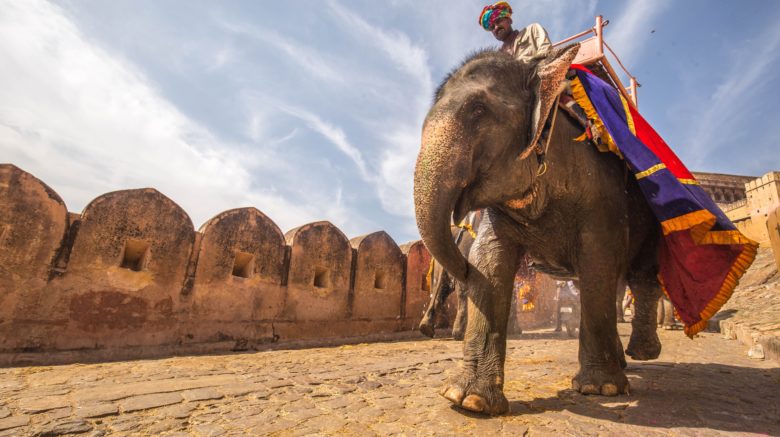India has been a sending country for adoptions across North America, Australia, New Zealand, and Europe since the 1970s. There was little oversight prior to 1984, when India instituted the Central Adoption Resource Authority (CARA) as a governing body to monitor adoptions. According to statistics from the Department of State, from 1999-2017, there were 5946 adoptions from India to the USA. Despite attempts toward better practices in Indian adoption, several trafficking scandals have been uncovered between NGOs and agencies, and we still do not know the full breadth of unethical practices in Indian adoptions.
Is this a Hague country?
Yes. It became a signatory for the Hague Convention in 2003. It is considered both a sending country and a receiving country, though statistics on the latter are unavailable.
Is this a sending or receiving country?
India both sends children abroad and is able to receive children from the United States and elsewhere.
What are the consular contacts for this country?
U.S. Embassy New Delhi
Shantipath, Chanakyapuri
New Delhi – 110021 India
Telephone +(91) (11) 2419-8000
Email acsnd@state.gov
Website U.S. Embassy New Delhi
Indian Embassy Washington DC
2536 Massachusetts Avenue, NW
Washington, DC 20008 USA
Telephone +1 (202) 939 9864
Email cons1.washington@mea.gov.in
Website Indian Embassy DC
Is there a governing authority within the country?
Yes. CARA is an Indian government agency that oversees placement and post-placement services. Visit their website here.
What are the demographics of children adopted?
According to the Department of State statistics, between 1999-2017 there have been 5,946 adoptions. 71.1% are children assigned female at birth and 29.9% are children assigned male at birth. While India had a large infant adoption program from the 1970s through the 1990s, recent changes to adoption requirements have made the age of children sent abroad older than previous generations, with a greater likelihood for kids with special needs to be matched abroad.
Where are Indian adoptees being sent?
Indian adoptee diaspora includes the United States, Canada, Australia, New Zealand, and Europe. Some programs have had higher numbers than others.
What are the demographics of adoptive parents adopting from India?
Per the most recent program information, both married and single people can adopt from India. They have to meet age requirements (no younger than 25 years old and no more than 50, though exceptions are made for older children, children with special needs, and sibling groups). A number of agencies involved in Indian adoptions are Christian-based, though Jewish, Hindu, and non-religious households have also adopted from there. While it has always been possible for an LGBT parent to adopt as a single parent, in recent years the ability for someone openly in the LGBT community has been a problem. There is a separate process for people of Indian descent living abroad (NRI/OCI) to adopt across state lines.
What adoption agencies are associated with this program (past and present)?
A number of agencies, NGOs, and orphanages are and have been associated with the intercountry program. Some include, Holt International, Sisters of Charity, International Mission of Hope, among many others.
Has this country had any trafficking scandals related to adoption?
Indian NGOs and orphanages have been associated with trafficking schemes to supply children for adoption. For example, in 2011, Pune-based orphanage Preet Mandir and several others were implicated in a trafficking scheme. In 2016, Kolkata NGOs were implicated in trafficking children, with alleged connections to birthing centers and orphanages/agencies active in Indian adoption back to the 1980s. The problem is wide-spread in cities where children are being sent through intercountry programs.
Has this country’s program ever been suspended?
India’s intercountry program has not been suspended, though it has undergone changes over the decades. Particularly after the inception of CARA in 1984 and in the wake of the Hague Convention. India has suspended adoption agencies for unethical behavior and mistreatment of children. Most recently, India banned Holt International, one of the original American intercountry adoption agencies, for their handling of the Sherin Matthews adoption (Sherin Matthews was allegedly murdered by her adoptive father. The case is ongoing and has not yet gone to trial).
Have adoptees from this country been rehomed?
Full and correct information on disruptions/rehoming is not readily available for any program, as informal rehoming is not traced. There is some indication that disruption/rehoming does occur with Indian adoptees. According to the Department of State, in 2011: an Indian child aged 5 was rehomed because the adoptive parents (APs) “couldn’t meet their needs” (Agency: International Family Services); an Indian baby (under 1) was rehomed because APs had a “change in family circumstances” (Agency: Faith International Adoptions); an Indian child aged 4 was rehomed because they were “difficult” (Agency: Holt International); and an Indian child aged 7 was rehomed because APs “couldn’t meet their needs” (Agency: MAPS).
Does this country have domestic adoption or a foster care system?
Yes, India does allow domestic adoptions (handled under family and religious law). India does not have a nationwide foster care system, but some areas have fledgling programs taking root.
Does this country have an intercountry surrogacy program?
India’s parliament banned commercial surrogacy with foreign couples in 2018. They consider intercountry surrogacy to be exploitative to vulnerable women.
Which adult adoptees from this country are writing about their experiences?
What resources are available for adoptees from this country?
Additional links and reports:
